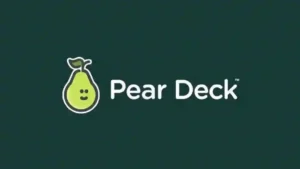Engaging Users with Your Topics | Multiple Stories Strategy

When it comes to engaging your audience, it’s not just about one big, flashy post—it’s about your topics | multiple stories. Let me tell you, this approach isn’t just a buzzword. It’s like the Swiss Army knife of content strategies, working wonders if you know how to wield it. I’ve learned that keeping things fresh and offering different angles on a single subject keeps users hooked. So, what is your topics | multiple stories? How can you make it work for you? Grab a coffee and let’s dive into how you can use this strategy to keep people reading, clicking, and coming back for more.
Why Do We Tell Stories, Anyway?
Let’s start with the obvious: why do humans love stories? Ask any storyteller or TikTok creator—they’ll tell you the magic is in making things relatable. It’s why we share memes that are literally just photos of cats looking perplexed. Humans are wired to pay attention to stories because they connect us emotionally. And guess what? That’s exactly what you need to do with your topics | multiple stories.
Think of it this way: instead of trying to cram every little detail into one gigantic, overwhelming article, why not break things down? Tell different stories that connect back to the same central theme. This is where you’ll keep people engaged. It’s like telling your friend about your summer vacation—sure, you could sum it up in one sentence, but where’s the fun in that? You tell the full story with all the little details: the sticky heat, the ice cream that melted faster than you could lick it, and of course, the near-disaster of the inflatable kayak ride. (That’s another story for another time.)
So, What’s This Whole “Multiple Stories” Thing?
Alright, let’s break it down. You’re focusing on your topics | multiple stories—a series of smaller, interconnected stories that revolve around the same idea. Rather than writing one big post about a subject, you could have multiple articles or pieces of content that approach the same topic from different angles.
For instance, let’s say you’re writing about sustainable fashion. Instead of a single post about the environmental benefits of upcycled denim (though, let’s be real, that’s a good topic too), you could go with:
- How Upcycled Fashion Saved My Wardrobe (and My Wallet) – A personal anecdote about how you started thrifting, complete with photos of your questionable style choices.
- The Hidden Environmental Costs of Fast Fashion – The hard facts. Research, data, and everything your eco-friendly aunt would appreciate.
- Five Simple Ways to Start Your Own Upcycled Fashion Journey – A practical, no-nonsense guide for beginners.
- Upcycled Fashion: The Future of Chic or Just a Fad? – A debate, where you can voice your own opinion, but also present other perspectives.
Each of these stories would pull the reader in for a different reason—whether they’re looking for personal stories, scientific data, or actionable advice. And when people see the variety, they’ll stick around longer. Let me tell you, a good strategy is like pizza—you can keep coming back for different slices.
The Big Payoff: Why Multiple Stories Matter
So, why bother with all this extra work? Why not just go with one post and call it a day? Well, here’s the thing: breaking up your content into multiple stories is a game-changer.
1. Engagement that Actually Lasts
We’ve all been there. You scroll through an article, get to the end, and it’s like—okay, cool, what’s next? But when you offer multiple stories? It’s like Netflix. One episode ends, but before you know it, you’re on the next one, and before you can stop yourself, it’s 3 AM and you’ve finished an entire season.
With multiple stories, you’ll get your readers to engage deeper. They’ll spend more time on your site, clicking through different angles of your topic. This means more chances for interaction—comments, shares, and that beautiful thing called “time on page.”
2. Your Audience’s Preferences Matter More Than You Think
Let’s be honest—different people love different things. Some folks just want to know the numbers, others want the emotional, personal spin, and still others just need the tips and tricks. By providing multiple stories, you cater to those different preferences.
I learned the hard way, by the way, when I tried to write a single blog post that explained how to train a puppy—big mistake. It was too long, too detailed, and frankly, I lost half my audience after the first paragraph. Now? I break it up. “How to Pick the Right Puppy Breed” is one story. “Puppy Potty Training: A Complete Guide” is another. And you better believe I’ve got a whole other post on puppy-proofing your house that’s just as important.
3. SEO Magic
Okay, I’ll admit it—SEO isn’t the sexiest topic. But let me tell you, this strategy is a secret weapon when it comes to search rankings. When you break your content into multiple pieces, you increase the chances that different parts of your site will rank for a variety of keywords. In other words, more visibility for your brand.
For example, if you write multiple blog posts on upcycled fashion, you’re not just targeting “sustainable fashion”—you’re targeting “how to start upcycling,” “benefits of eco-friendly fabrics,” and so on. It’s like casting a net instead of hoping for a fish to jump into your lap.
4. Build Trust & Authority Like a Boss
Want to build your brand’s authority? Then keep showing up with solid, varied content. The more stories you tell around a topic, the more your audience will see you as a trusted source. And here’s a little secret—people trust what’s been around a while. By producing more content, you’re demonstrating that you’ve got the goods to back up your expertise. It’s like how everyone in town goes to Pete’s Hardware on 5th Ave for their gardening supplies—because Pete knows what he’s doing.
Tips for Crushing the Your Topics | Multiple Stories Strategy
So, you’re sold on this whole strategy. But how do you actually do it? Let’s break it down.
1. Get Inside Your Audience’s Head
First, you’ve got to know your audience. What keeps them up at night? What are they Googling at 3 AM? I’m not saying you need to follow them around (though, wouldn’t that be weirdly fun?), but understanding their needs is key. I once spent a week writing a post on “Meditation for Beginners” only to find out my audience was actually super into productivity hacks. Oops. I had to scrap that and start over with “How to Get More Done Without Losing Your Mind.” Much better.
2. Don’t Just Regurgitate Facts—Give ‘Em Some Flavor
Sure, you could just say, “Here’s why upcycled fashion is good for the environment,” but yawn, right? Add some flavor. Tell a story. Talk about your own experiences or share how your friend Becky turned her old t-shirt into a chic shopping bag. Make it relatable. People want to feel like they’re not just reading a manual—they want to feel like they’re chatting with a friend over coffee.
Fun fact: Did you know Victorians thought talking to your ferns kept you sane? Yeah, I talk to my plants just in case. I’m not saying it works, but my begonias look hella happy.
3. Keep Things Simple (But Not Too Simple)
There’s a fine line between explaining a topic clearly and dumbing it down. My first herb garden died faster than my 2020 sourdough starter—RIP, Gary. And you know why? I got too wrapped up in complicated soil science and forgot that my parsley just needed sunlight and water. Stick to the basics when you need to. But remember, even the basics can be fun if you frame it right.
4. Give Your Content Space to Breathe
Look, no one wants to read a 5,000-word dissertation on your topic. We’re living in a fast-paced world—people don’t have the attention span for it. That’s where multiple stories come in. A bit of bite-sized content keeps people coming back.
So, start small. You don’t need to write an epic all at once. A quick blog post, a punchy social media update, and a YouTube video later, you’ve got a full content ecosystem that brings people back for more.
5. Cross-Promote Like a Pro
The beauty of multiple stories? They give you plenty of material to cross-promote across platforms. One post can link to another. A podcast episode can mention a blog post. And don’t forget social media—share little snippets to tease the full story. It’s like giving your audience a free taste of everything on the buffet table.
The Wrap-Up (But Not Really)
So yeah, this whole your topics | multiple stories strategy is a game-changer. If you want to keep your audience engaged, coming back, and sharing your stuff, you’ve got to stop thinking of your topic as a one-and-done deal. Break it down. Tell multiple stories. Give people a reason to stick around and dive into what you’re offering.
Anyway, here’s the kicker: It’s not just about churning out content. It’s about creating something people actually care about. It’s not a sprint, it’s a marathon. And trust me, with multiple stories, you’re in it for the long haul. Just don’t forget—your audience is human, too. Keep it real, keep it fresh, and watch those engagement numbers rise.







